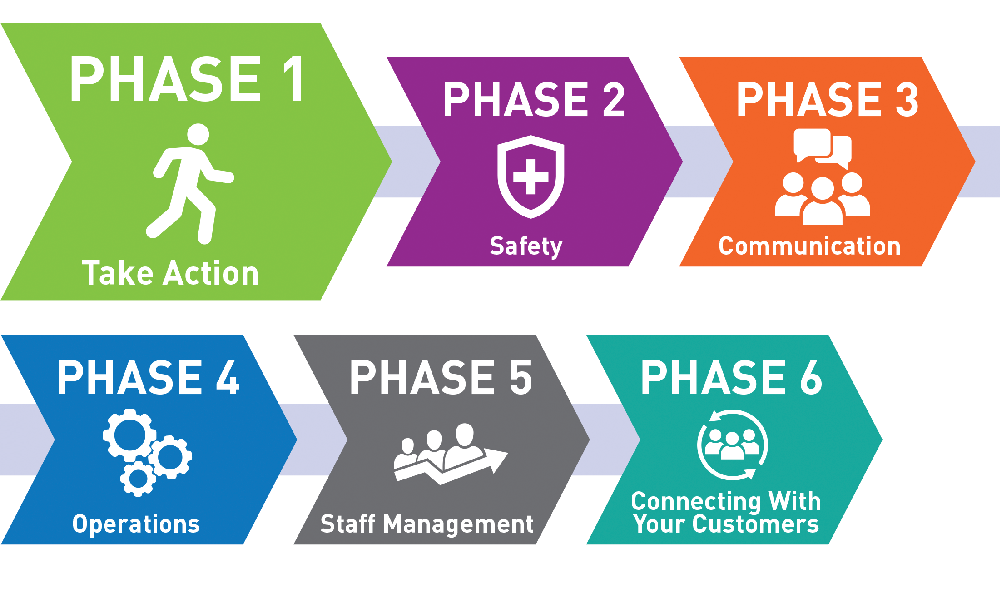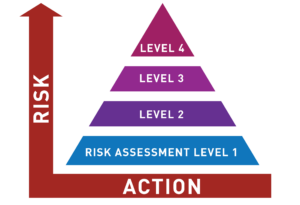Navigating Golf Through Change With Covid-19


Navigating Golf Through Change With Covid-19
With any emergency taking place, many considerations must be made for your business. Navigating through any emergency will define your business in your community. In some cases, this may decide the fate of viability for future revenue and success. Our goal with this outline is to help you navigate through these challenging times with COVID-19 presenting a significant public health threat. We hope to maintain clarity and help you through some of the necessary steps required to build a functional and safe response plan.
PHASE 1: Take Action
As part of your leadership team, you should respond quickly and outline action plans for your business. Success will be established through your objective and critical thinking skills. This will ultimately reduce your liabilities while driving trust with your staff and community. Outline a framework of necessary tasks appropriate for dealing with this emergency.
- Building a risk assessment tool – building this risk framework will outline threat levels to your business. Ultimately your focus will be on reducing risk to your staff and community.
- Use the risk assessment tool as a starting point to fall back on during reassessment periods.
- Your plan should be easy to follow. If the team lead becomes unavailable, ensure your plan can be executed with ease.
PHASE 2: Safety
Determine and define how your business will respond to the emergency with safety at the forefront. Outline measures are taken to ensure every component of your business is addressed.
- Staff – Immediately update all staff records with phone numbers, emails, addresses. Keep staff updated on company risk assessment levels.
- Public policy – Summarize who can access your facility and how you will communicate their well being. Are you a private, semi-private, or public facility?
- Information sources – Where are you getting your information from regarding public risk? Is your response based on what others are doing or are you responding to public authority and policymakers?
- Outline and list your information sources – OH&S, Municipal government, Federal government, police, weather authorities, etc.
- Insurance – Take the time to review your insurance policy. Be deliberate and ensure you understand all components of your documents.
* Tip – If you require clarity, consult with your broker or provider. - Documentation – Ensure you are recording all steps taken when responding to an emergency. Record your risk assessment levels, what you’ve communicated to your staff, memberships, and the public.
PHASE3: Communication
Define how you will communicate action responses during the emergency. You should consider communication disruptions and methods to ensure appropriate dissemination.
- Phone – Update your answering machines or phone management systems daily.
- Text – Secondary communication to staff and community who prefer this interaction.
- Email – Consider building an email list to express your intent. Email can reach a broad group quickly.
- Website – Update your website with every risk assessment change.
- Social media – Reaches people who are outside your contact lists.
- Signage – If necessary, post signage at all access points to your facility.
- Barriers – Safety and asset management in mind, physical control may be necessary.
PHASE 4: Operations
Based on your updated risk assessment level, communicate plans with your community. This operational plan will be critical in ensuring you are providing the best standards for your facility during an emergency.
Finance
Determine your operational runway. Measure how far your business can operate under each risk assessment level. Outline acceptable purchasing requirements for predicted emergency longevity.
Pro-Shop
Prepare accordingly for the staff and services provided. Outline how your presentation will change during each step of risk assessment.
- Staff – Identify minimum staffing requirements.
- Safety – Define how will your facilities be maintained.
- Will pro-shop be processing customer transactions and if so, how will this be done?
- Outline cleaning procedures and record daily.
Food and Beverage
Address the specific needs required for your facility. Ensure you can safely prepare food and present without compromising public or staff safety
- Staff – Based of your risk assessment, outline minimum staffing levels based on potential traffic.
With these assumptions, outline food and stocking requirements. - Maintenance – Define how will you maintain the facility. Outline cleaning procedures and record.
- Adhere to guidelines for delivered food and packages.
Maintenance
As a maintained facility and product, the golf course grounds will be critical to continue operations during emergencies. Dependent on the risk assessment achieved, modify maintenance standards appropriately and consider company runway. Not maintaining grounds can lead to asset losses and will require significant repair.
- Staff – Depending on your risk assessment level, how will you lower staffing levels to maintain the golf course. In many cases, dropping staffing to 2-8 is possible to keep up with minimum course requirements.
- Consider staggering start times for staff to limit interaction, communicate safety requirements.
- Always keep a minimum of 2 staff on site and ensure communication is open and available.
- Mowing – Outline a height of cut (HOC) schedule based on risk assessment responses.
- Facility upkeep – Summarize how your buildings and facilities will be maintained.
- Fertilizer/Chemical – If reduced or limited traffic occurs and HOC/mowing is modified, prepare a plan for fertilizer and chemical inputs.
- Reduce nitrogen with modified maintenance standards.
- If disease pressures are possible in your area, consider stocking 1 or 2 control applications.
- Growth regulators – With staffing limited and access to the property modified, you can consider the use of growth regulators. In many cases, these products can reduce mowing frequency and improve plant health.
- Manage all tools, products, outbuildings, etc. to avoid health and safety issues based on risk assessment.
- Continue daily checks and monitor for disease, moisture, mowing, etc.
PHASE 5: Staff Management
For most facilities staff are a primary asset and keeping personnel is critical. Identify which staff are employed based on your risk assessment. Communicate to your teams updated risk assessments and what they can expect for employment.
- Observe operational health and safety. Ensure all staff safety protocol is maintained. Define new standards to continue working in a safe manner.
- Present new schedules and outline expectations regarding safety, breaks, social distancing, etc.
- Ensure there are always 2 employees working.
- Re-direct and transition staff into new roles. I.e. for example, under full shutdown, utilize salaried staff from clubhouse operations on grounds to keep up with maintenance.
- If available, update staff with programs or offers from federal/provincial financial aid.
- Pins with no holes.
- Digital or e-signature for playing waivers.
PHASE 6: Connecting with Your Customers
Outlined in your communication plan, update your customers and community with company actions. Ensure you are connecting to all existing and potential patrons. Take all measures to ensure you are summarizing your plans in concise, effective means.
- Show your customers the value of golf;
- Healthy and safe place to be outside.
- Social distancing can be executed safely on a golf course.
- Be prepared with maintenance standards to open for golf. With your modified operations plan, prepare and present your golf course accordingly.
- Amend payment methods if required;
- Outdoor kiosk.
- Online payment methods.
- Present safety protocols based on risk assessment;
- Tee times spacing, single cart use, no holes/flags, no rakes, etc.
- Consider limitations in place for property access and availability. Modify your offerings accordingly.
- This may be presented as waivers, total player capacities, etc.
After outlining your goals and procedures regarding response planning it is critical to re-assess your actions. Whether this is done on an hourly, daily, or weekly cycle, you should revise constantly during an emergency. Flow-through your build plan and communicate with your community.
Recent Posts
EcoBunker Synthetic Revetting More Sustainable than Natural Turf*
*A recent report by the Welsh government has found that EcoBunker synthetically revetted bunkers have…
Saving money and improving practice with Rangeline
Chris Thuer CGCS, superintendent at the Bear Slide club in Indiana, says that the use…
Escondido Golf and Lake Club: A Texas Golfing Treasure that Sets the Standard for Course Maintenance
When you think of a top-tier golf course, several factors come to mind: a stunning…
GCSAA names Joshua Tapp director of environmental programs
Former EPA Region 7 acting deputy regional administrator will provide strategic direction for environmental initiatives…
Circling Raven Golf Club Set to Open April 4; Coeur d’Alene Casino Amenity Unveils New Programs, Enhancements
Coeur d’Alene Casino Resort Hotel will open Circling Raven Golf Club on April 4 (weather…
Noteefy Expands Luxury Island Resort Portfolio with Additions of Casa de Campo, Fairmont Southampton
Casa de Campo Resort & Villas in the Dominican Republic and the Fairmont Southampton in…



